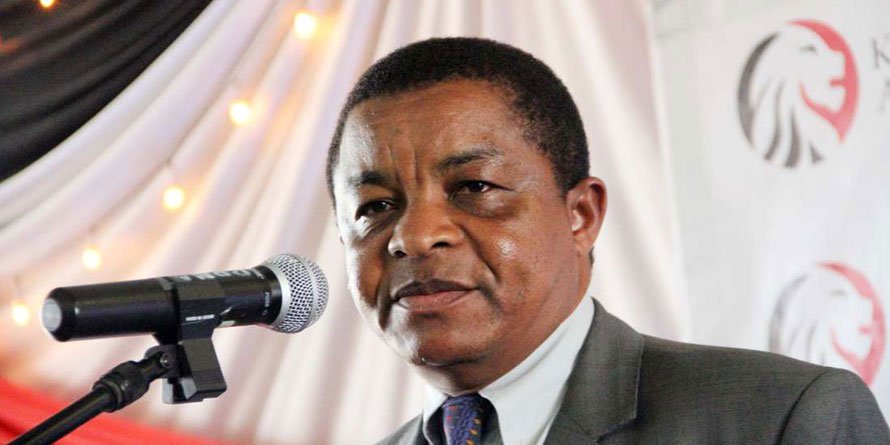Kenya Revenue Authority (KRA) Commissioner General John Njiraini. FILE PHOTO | NMG The two tax categories contributed the most to Kenya Revenue Authority’s (KRA) Sh124.6 billion total shortfall for the 2017/18 financial year, according to the Treasury data released early this month.
KRA collected Sh1.36 trillion in the year, falling below the Sh1.49 trillion target.
Total revenue collection, including fees and penalties levied by government ministries, hit Sh1.49 trillion last year against a target of Sh1.66 trillion. The revenue shortfall raises concerns as to whether the government can raise up to Sh1.949 trillion projected in the current (2018/19) financial year – a 17.5 per cent increase from last year’s target.
Revenue shortfall in successive years has seen the Treasury turn to massive borrowing to finance the recurrent budget, fund development projects and repay public debts that has now crossed Sh5 trillion. The cash crunch has seen the Treasury struggle to make disbursements to ministries, departments and agencies (MDAs) as well as to counties.
Payroll and corporate income taxes were the biggest underperformers in generating State revenues in a year characterised by poor company profitability and loss-making that saw thousands lose their jobs.
Income tax paid by salaried workers in form of Pay As You Earn (PAYE) fell Sh29.2 billion short of target, as “other” income taxes including those paid by companies were Sh39.5 billion short of target.
Revenue collected within ministries and grants from donors (described as appropriations-in-aid or A-I-A) also fell short of target by Sh47.8 billion. Excise duty, which is payable on consumer goods, raised Sh179.4 billion that was Sh16.9 billion below projection, valued added tax (both local and on imports) was below target by Sh21.2 billion while expected investment income was Sh7.4 billion short.
An analysis by the International Budget Partnership (IBP), an international NGO that monitors national and county budgets, shows that the key reason for the failure to meet budget targets over the past four years is attributable to unrealistic revenue projections.
“We have already seen that these expectations are not realistic; the national government only takes in 20 per cent of total revenue in the first quarter, and 46 per cent by the end of December.
Additionally, the data shows that neither MDAs nor Consolidated Fund Services receives even 46 per cent by the end of the second quarter; on average, MDAs receive 43 per cent of their annual revenue by December. It is unlikely that counties receive more than this,” says […]
